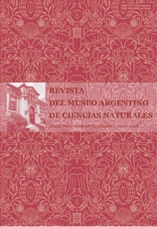Temperatura del agua continental y su influencia en las migraciones de los peces en la cuenca del Río De La Plata
Resumen
With a total area of 3 x 106 km2 shared by five countries and a mean discharge of 25000 m3 s –1, the Río de La Plata is the second largest hydrographic system in America, after the Amazon. The Río de La Plata basin is composed of two main watersheds, the Paraná and Uruguay Rivers, which together form the Río de la Plata estuary. From hydrological, physical and biological standpoints, the Río de la Plata basin is a complex system, where singular biological phenomena occur, as migrations and massive fish deaths. This paper refers strictly to the temperatures in the subtropical potamous axis from the “great swamp” at 20 ° S and extending linearly to about 1200 km south to the Rio de la Plata, with a strong temperature gradient. This analysis includes some pampasic ‘lagunas’ (37° S) because they are the southern end of distribution of brazilic ichthyofauna. In pampasic lagunas the mean annual water temperature has no significant difference with annual mean air temperature. In the Río de La Plata basin the water temperature is higher than the air temperature; the difference varies between 4.5 and 2.2 °C. The results are discussed in relation to massive fish deaths and migrations.
Texto completo:
PDFEnlaces refback
- No hay ningún enlace refback.

This work is licensed under a Creative Commons Attribution 3.0 License.

